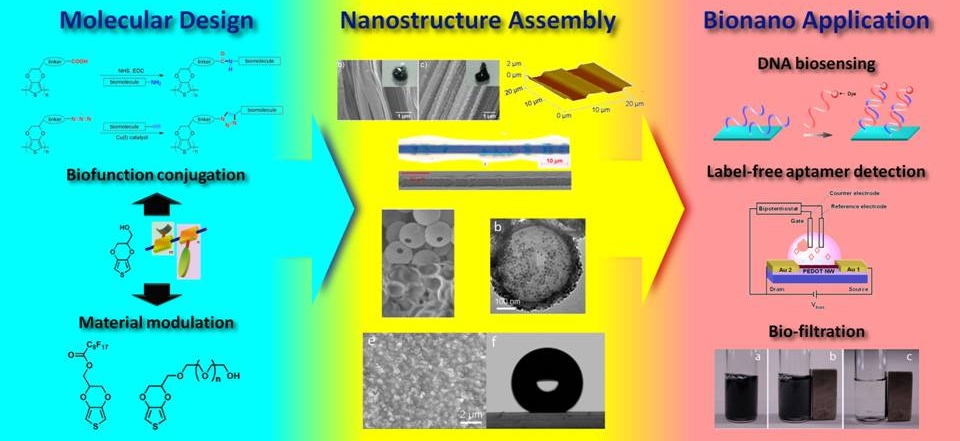Research Topics

Efficient
synthesis of thiophene-based functional pi materials
In
tradition,
functional pi materials are often synthesized via transition metal
mediated
cross-coupling reactions. Although this method is very powerful and
efficient,
many toxic side products are produced. In many cases, the synthetic
approaches
taken place are not atom economical. We investigate on the development
of novel
synthetic methodology to build functional-pi materials, including small
molecules and polymers. They are important as a greener and more
efficient
synthetic approach toward these functional materials.
Molecular
building
blocks for hydrophilic conducting polymers
In order
to apply
conducting polymers for bioengineering applications, monomers with
resistive
binding to proteins and stability in aqueous solutions are required. We
synthesized a number of new
hydrophilic molecular building blocks of thiophenes.
Hydrophilic conducting polymer and
alternative hydrophobic-hydrophilic conducting blockcopolymer
would be suitable for
bioelectronic applications.
Protein-resistive conducting polymer biointerfaces for cell
engineering
Mimicking
membrane-extra cellular matrix (ECM) interface, we compose
conducting polymer thin films with
zwitterionic sidechains and these
thin films have shown great resistance of biomacromolecule binding. For example,
the new conducting polymer
biointerface have shown zero bovium serine albumin (BSA) binding
and can be potentially applied for
medical implants. We are
investigating the application for them for
cell engineering.
Controlled
oxidative polymerization to form conducting polymer
nanostructures
Although
simple, it is
often very difficult to control the oxidative polymerization. The
nanostructures created are very sensitive to the reaction conditions.
We are
developing general approaches to form specific conducting polymer
nanostructures with a variety of functional groups.
Functional
and nanostructured conducting polymers for cell capturing
Efficient
cell capturing is very important for
diagnostics and therapeutics of many diseases. We have
demonstrated the possibility to create
novel functional and nanostructured surfaces
to enhance the cell capturing efficiency by
conducting
polymers. Continuous
improvement will lead to
breakthroughs in biomedical applications
Cells and nanostructured conducting polymers
integration
We are
designing conducting polymer-based bioniterface to control cell
behaviors.
Utilizing both “top-down” and “bottom-up” approaches, we would like
tocrear
conducting polymer nano-networks and conducting polymer nanofeatures to
control
the temporal spatial arrangement of cells.
